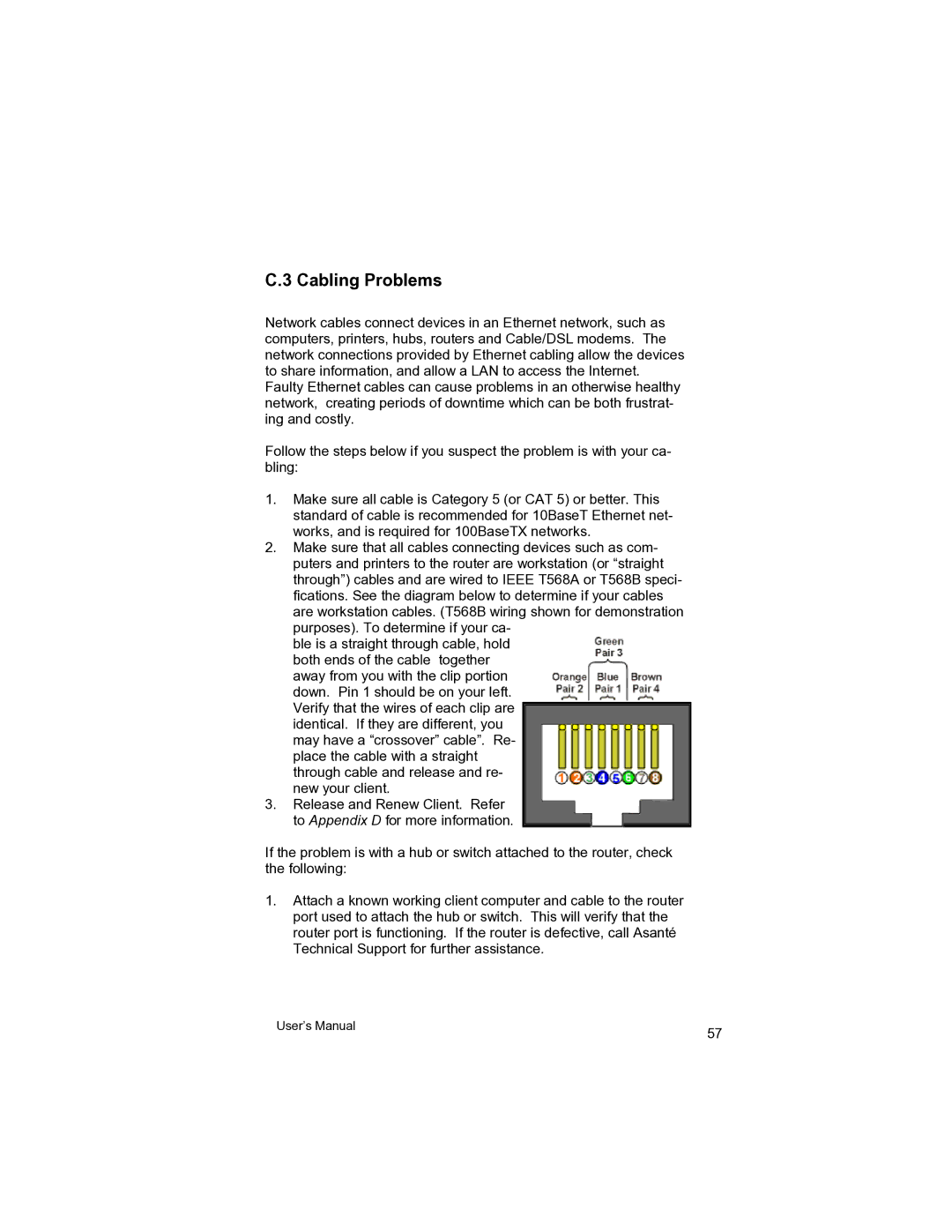
C.3 Cabling Problems
Network cables connect devices in an Ethernet network, such as computers, printers, hubs, routers and Cable/DSL modems. The network connections provided by Ethernet cabling allow the devices to share information, and allow a LAN to access the Internet. Faulty Ethernet cables can cause problems in an otherwise healthy network, creating periods of downtime which can be both frustrat- ing and costly.
Follow the steps below if you suspect the problem is with your ca- bling:
1.Make sure all cable is Category 5 (or CAT 5) or better. This standard of cable is recommended for 10BaseT Ethernet net- works, and is required for 100BaseTX networks.
2.Make sure that all cables connecting devices such as com- puters and printers to the router are workstation (or “straight through”) cables and are wired to IEEE T568A or T568B speci- fications. See the diagram below to determine if your cables are workstation cables. (T568B wiring shown for demonstration purposes). To determine if your ca-
ble is a straight through cable, hold both ends of the cable together away from you with the clip portion down. Pin 1 should be on your left. Verify that the wires of each clip are identical. If they are different, you may have a “crossover” cable”. Re- place the cable with a straight through cable and release and re- new your client.
3.Release and Renew Client. Refer to Appendix D for more information.
If the problem is with a hub or switch attached to the router, check the following:
1.Attach a known working client computer and cable to the router port used to attach the hub or switch. This will verify that the router port is functioning. If the router is defective, call Asanté Technical Support for further assistance.
User’s Manual | 57 |
|
